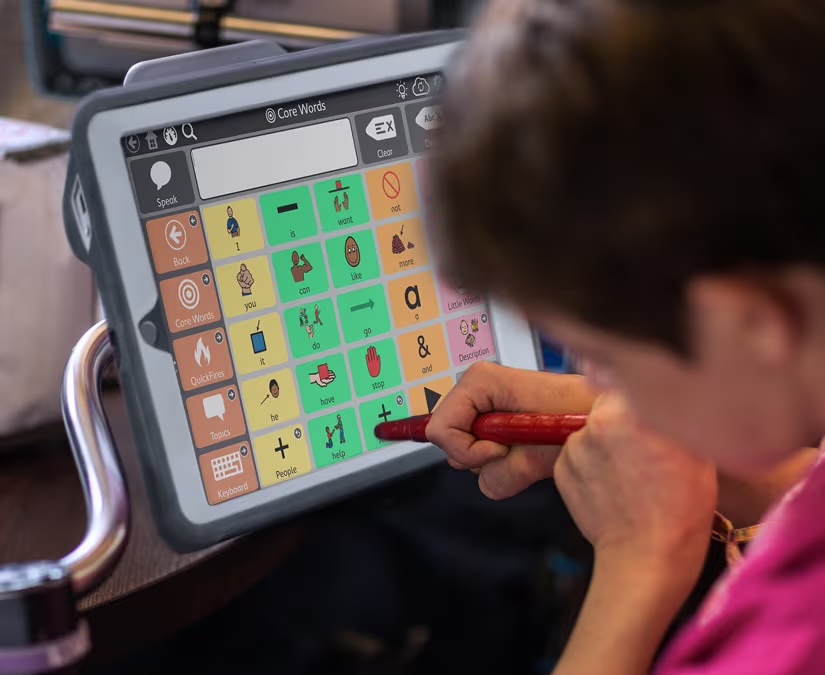

Often overlooked in the device ecosystem, assistive technology plays a crucial role in improving the lives of people with disabilities. Simple devices like plastic tab openers for soda cans, while seemingly trivial to many, are vital for those with fine motor control issues. High-tech assistive devices, such as eye trackers that convert eye movements to speech on an iPad, significantly benefit people with ALS, cerebral palsy, autism, and Rett syndrome by facilitating communication. However, such technology remains underutilized due to lack of awareness and accessibility.
Tobii Dynavox (TD), a leading provider of assistive technology, specializes in eye tracking and offers a range of products including games, accessories and affordable speech-generating devices. These products are essential to the daily functioning of users with disabilities, unlike the more general consumer-focused eye tracking technology offered by the Tobii Group overall. Despite the critical role of these technologies, TD faces challenges in making them widely available, hampered by social, economic, and cultural barriers that limit access to and awareness of these assistive devices.
Demand for assistive technology is growing: two million people are diagnosed with a disability each year, but only 2% have access to assistive communication devices. TD CEO Fredrik Ruben underlines the urgency of increasing this percentage to avoid failing millions of people who could benefit from such technology. TD’s range of devices, such as the eye-tracking I-Series and TD Pilot, offer life-changing functionality for users, allowing them to perform tasks such as watching Netflix, browsing the web and sending emails independently. However, the high cost of these devices, together with different health policies between countries, creates significant access barriers. TD tries to alleviate this by helping users with insurance coverage, but challenges remain.
Monica GreenTD’s story illustrates the transformative impact of TD technology. Diagnosed with ALS, Green struggled with decreased speech and mobility. After experiencing difficulties with a non-TD speech-generating device, he switched to a TD I-Series, which allowed him to control his power chair with eye movements and use text-to-speech to communicate. This technology brought a degree of independence back into his life, highlighting the critical need for such assistive devices.
TD’s offerings include the TD Pilot, an iPad Pro equipped with eye tracking and text-to-speech capabilities, and the I-Series, which offers more diverse access methods and compatibility with Android and iOS devices. While these technologies are revolutionary, they face obstacles in terms of accessibility and awareness. Many professionals, including speech therapists, lack sufficient training in assistive technologies, creating a knowledge gap that makes widespread adoption of these solutions difficult. TD’s shift toward training and education aims to close this gap, but the path to making assistive technology more accessible and understood is slow but essential.
The power of a voice
The development of communication technologies for people with disabilities is a crucial advance, as it gives them new possibilities and improves their quality of life. Technologies like eye tracking enable people, even those with severe disabilities like ALS, to interact with the world and express themselves, significantly impacting their lives and the lives of those around them. These innovations not only enable basic communication but also facilitate important achievements, such as attending college. However, the challenge remains in raising awareness and accessibility, as many still lack access to these life-changing tools. The goal is to continue innovating and collaborating with leading technology companies to expand accessibility, ultimately aiming to make communication a fundamental human right.
The future of assistive technology is bright, and TD is exploring partnerships and innovations to integrate eye tracking with social media and other platforms. The goal is to create more personalized and effective communication aids, eventually allowing users to use their own voices through these devices. Despite the challenges, the assistive technology market is growing and, with increased awareness and support, can become more normalized and accessible to those who need it.
Fountain: The messenger







